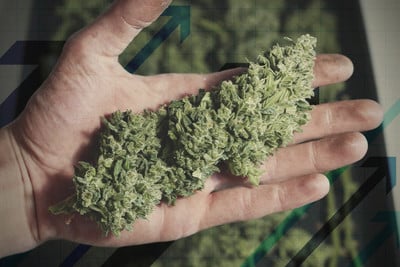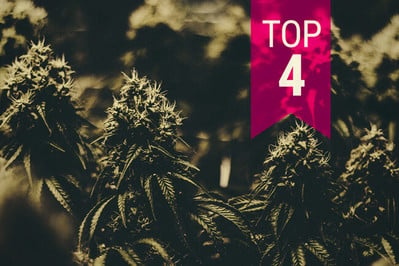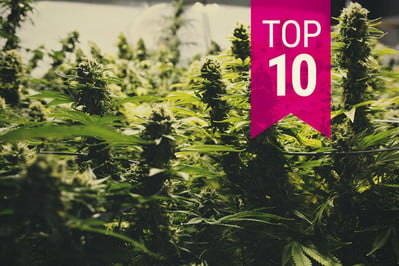Included FREE items

Understanding Cannabis Yield per Plant
- Growing cannabis step by step
- Cannabis growing basics
- Choosing your seeds
- How to germinate seeds
- The cannabis vegetative stage
- The cannabis flowering stage
- Harvesting cannabis
- Trimming, drying, and curing
- Choosing pots and soil
-
Growing indoors
- A Complete Overview Of Growing Cannabis Indoors
- Cannabis Cultivation Tips: How To Set Up Indoor Grow Lights
- How Many Cannabis Plants Can You Grow Per Square Metre?
- Indoor Cannabis Growing: Relative Humidity and Temperatures
- Hydroponics Cannabis Growing Guide (with diagrams)
- Cannabis Micro Growing: Growing Great Weed in Tiny Spaces
- Growing outdoors
- How to grow autoflowering cannabis
- Cannabis nutrients and pH
- Cannabis troubleshooting: Nutrients
-
Cannabis troubleshooting: Growing
- Cannabis Seed Germination — Troubleshooting Guide
- How to Deal With Pythium (Root Rot) in Cannabis Plants
- Slow Cannabis Plant Growth And What You Can Do About It
- How to Prevent and Fix Stretching in Cannabis Seedlings
- Watering Your Cannabis: How To Fix Over And Underwatering
- Understanding Male, Female, And Hermaphrodite Cannabis
- Identifying and Treating Common Cannabis Ailments
- How To Revive a Sick Cannabis Plant
- How to Avoid Mouldy Weed During Drying and Curing
- How to Prevent and Treat Dry and Crispy Cannabis Leaves
- What Cannabis Leaves Can Tell You
- Yellow Cannabis Leaves
-
Cannabis Strains Grow Report
- HulkBerry Automatic Grow Report
- Blue Cheese Auto Grow Report
- Purple Punch Automatic Grow Report
- Triple G Automatic Grow Report
- Do-Si-Dos Automatic Grow Report
- Green Gelato Automatic Grow Report
- Haze Berry Automatic Grow Report
- Purple Queen Automatic Grow Report
- Cookies Gelato Automatic Grow Report
- Sherbet Queen Automatic Grow Report
- Sweet Skunk Automatic Grow Report
- Medusa F1 Grow Report
- Cannabis plant training
-
Weed growing tips
- The Cannabis Plant Anatomy
- How to preserve seeds
- How Much Sunlight Do Outdoor Cannabis Plants Need To Grow?
- How to Control and Prevent Stretching in Cannabis Plants
- How And When To Transplant Your Cannabis Plants
- My Cannabis Plants Are Growing Too Tall: What Should I Do?
- Should You Worry About Purple Or Red Cannabis Stems?
- What To Do When Your Indoor Cannabis Won’t Flower
- How To Protect Your Cannabis Plants From Heat Stress
- How To Tell If Your Female Cannabis Plant Has Been Pollinated
- Growing Medical Marijuana
- Bud Washing: How to Clean Your Weed
Contents:
- Where are the bud sites on a cannabis plant?
- What is cannabis plant yield?
- How to estimate yield for indoor weed plants
- How to estimate the yield of outdoor plants
- Estimating the yield of autoflowering plants
- Other important considerations that affect cannabis yield
- Determining marijuana plant yield: the takeaway
Figuring out the yield of a cannabis crop before you have it is no mean feat. In fact, it’s not possible to do so with total accuracy. What we can do, however, is consider our setup, the genetics of our chosen plants, how much light and nutrients we are able to provide, and the maximum space allotted—and then make a stab at a likely yield.
There are many factors that affect how much weed per plant you can achieve, and regulating these will allow you to estimate and increase the size of your harvest!
Where Are the Bud Sites on a Cannabis Plant?
There are two types of bud sites on a cannabis plant. The first is the main cola, which forms around the very top of the plant—where you’d put an angel or a star on a Christmas tree. If using simpler growing techniques, this cola is likely to yield the biggest cluster of buds.
Apart from this, you’ll find buds forming on the side branches, popping up first at the points where the branches meet the main stem. When pre-flowering begins, you’ll notice little white pistils sprouting from these sites. In time, buds will begin to develop and fill up the branches.
Through certain training techniques, the size of the buds can be significantly increased. For instance, Topping or ScrOG aim to make each bud site more like the main cola.
What Is Cannabis Plant Yield?
The yield is the final amount of bud you get from your plant(s) after harvest. Within the weed industry, it is chiefly measured in grams.
Whether you’re growing indoors or outdoors will determine exactly how best to measure or predict your yield. Outdoors, the yield tends to be measured in grams per plant. So you’ll see breeders advertising strains as producing, say, up to 300g/plant. Indoors, however, it’s often measured in grams per square metre (g/m²). Plants most commonly autumn between 400 and 500g/m².
The latter measurement takes into account each square metre of the canopy that’s exposed to light. It’s assuming that a technique like SOG or ScrOG is being employed, which maximises light exposure to the bud sites. If you’re not using these techniques, yields are likely to come in significantly lower than the upper metrics advertised by seed banks.
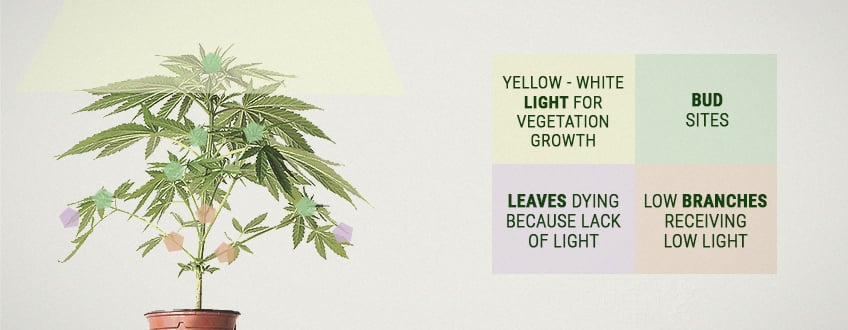
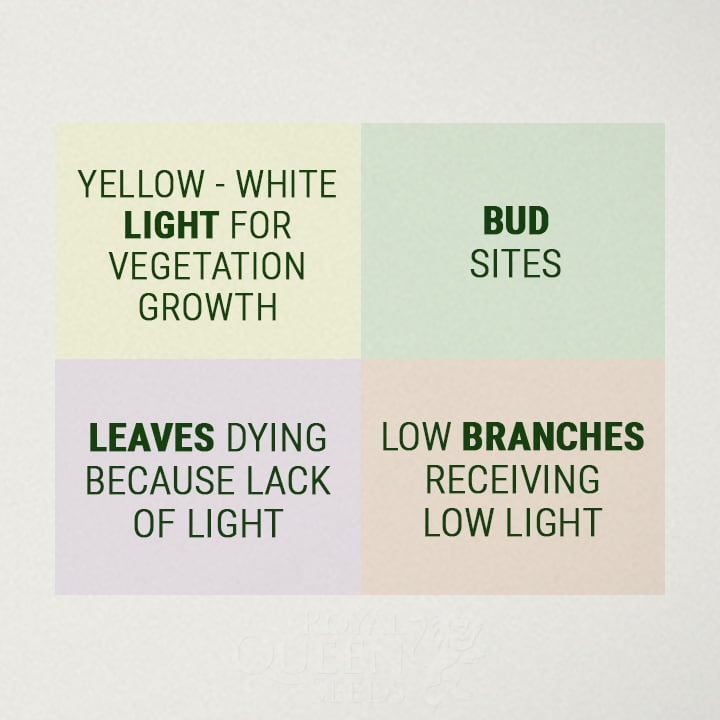
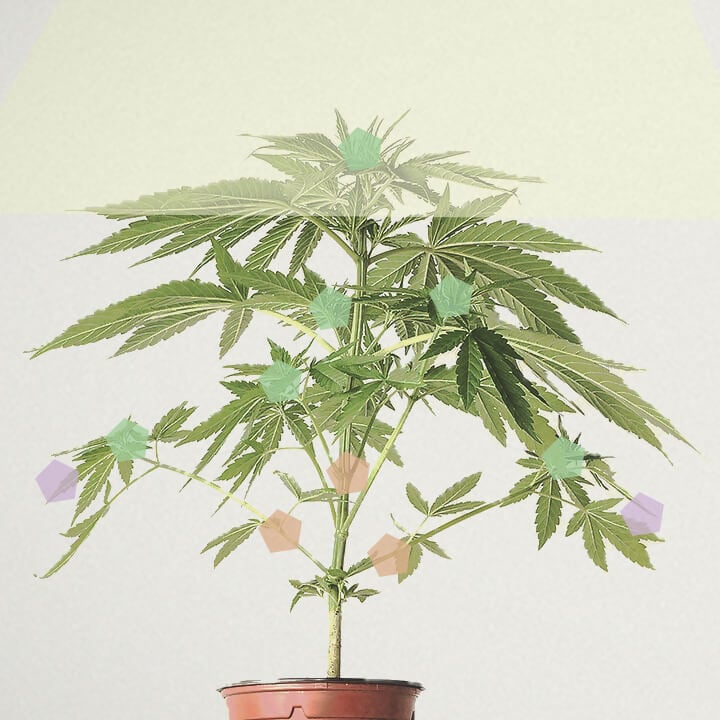
Wet vs Dry Cannabis Yield
Before getting over-excited about a massive yield, it’s important to distinguish between wet and dry yield.
When bud is first harvested from a cannabis plant, it will be full of water, which will account for about 75–80% of its weight. So if you pull in 100 grams straight after harvest, you might find you only have 20–25 grams once you’ve cured it.
A simple sum to estimate your dry harvest, once you have your wet harvest, is to multiply its weight by 0.25. This will tell you what 25% of its current weight is.
How To Estimate Yield for Indoor Weed Plants
But how much weed does one plant produce? Or, in the case of indoor growing, how much does each square metre of canopy produce? Estimating this is difficult, and it can never be more than an estimate. That being said, by assessing a few of the major influences on yield, it is possible to get some sense of what your crop is likely to churn out.
The Influence of Pot Size on Yield
Pot size will have an effect on the final yield. Put simply, a bigger pot means a bigger potential harvest. That said, don’t buy the biggest pots you can find, as these come with significant challenges that, if not managed properly, can ruin the harvest entirely.
Increased pot size means more space for the roots to grow, which will encourage more growth above ground. A plant will only grow to a size that is sustainable for its root system. If it didn’t, it wouldn't be able to support itself or adequately intake water and nutrients.
Bigger plants need more water, more nutrients, and more light. Not to mention much more space. Plus, once a plant is over a certain size, it will require training to get good results. If you’re not used to growing cannabis, it is advisable to keep your plants smaller, as they will require less care. This is another reason for measuring indoor yield in g/m². You may have 4 huge plants or 16 smaller plants. While the yields may be similar in the end, the smaller plants will grow faster and potentially require less care.
The average grower will use an 11-litre pot; this will allow your plant to reach about 90cm—a good size, especially if growing indoors.
All this being said, size does not necessarily indicate the final yield. You may find a plant shoots up but ends up being tall and lanky, while a stubbier plant might ultimately yield more.
| For seedlings and young vegging plants | For rubust vegging plants | Beginning of final pot size threshold |
| 10cm = 0,5L | 25cm = 11L | 46cm = 57L |
| 13 - 15cm = 1L | 30cm = 19L | 61cm = 95L |
| 18 - 20 cm = 4L | 36cm = 26L | 76cm = 114L |
| 22cm = 7,5L | 41cm = 19L |
| For seedlings and young vegging plants | For rubust vegging plants | Beginning of final pot size threshold |
| 10cm = 0,5L | 25cm = 11L | 46cm = 57L |
| 13 - 15cm = 1L | 30cm = 19L | 61cm = 95L |
| 18 - 20 cm = 4L | 36cm = 26L | 76cm = 114L |
| 22cm = 7,5L | 41cm = 19L |
How Genetics Impacts Yield
Each strain of cannabis is genetically predisposed to produce yields within a certain range. Some churn out monster yields of 1500g/plant or more outdoors! Other plants, no matter how well you treat them, offer significantly less in terms of yield.
So do some research on your strain(s) of choice beforehand, and check if their maximum yield is enough to satisfy you. Also, be aware that just because a strain can produce a huge yield doesn’t mean it will—you’ve got to treat it right.
-
Estimating Yield Based on Lighting and Wattage
It is possible to estimate your final yield based on the overall wattage of the lights being used. However, it is a rough estimate that differs depending on the type of lighting. For instance, CFL, HPS, and LED lights of the same wattage will not give the same amount of photo-power to your plants. LEDs are very efficient, and thus can perform well at a lower wattage.
Within the growing community, the upper limit of 1 gram/watt is typically used. This means that for every watt of light you give your plants, you can hope to get 1 gram of weed back. So the average yield per plant under a 600W light would be 600g. Aiming for this, especially as a novice, is very optimistic. More realistically, aim for around 0.5 grams/watt, and you’ll have a better idea.
Again, your setup matters here. The intensity of light is greatest directly beneath its centre and decreases as you near the periphery of its range. So to maximise the wattage available to you, it may be better to have fewer plants drinking up the more intense light, rather than many plants withering in the shadows.
| CFL | HPS | |
| WATT | 200W | 100W |
| CABINET | 60 x 60 x 160 | 60 x 60 x 160 |
| GRAMS | 80 - 150 gr | 80 - 100 gr |
| HPS | LED | LED |
| 250W | 100W | 400-600W |
| 80 x 80 x 160 | 60 x 60 x 160 | 120 x 120 x 200 |
| 230 - 250 gr | 100 - 150 gr | 400 - 650 gr |
| CFL | HPS | HPS | LED | LED | |
| WATT | 200W | 100W | 250W | 100W | 400-600W |
| CABINET | 60 x 60 x 160 | 60 x 60 x 160 | 80 x 80 x 160 | 60 x 60 x 160 | 120 x 120 x 200 |
| GRAMS | 80 - 150 gr | 80 - 100 gr | 230 - 250 gr | 100 - 150 gr | 400 - 650 gr |
-
Estimating Yield Based on Available Space
Having more space available to you means the opportunity for bigger yields. While there are various equations you can use to determine the exact yield based on the size of your grow space, the general principle is; if you have more space, you can fit more or bigger plants in. Moreover, you’ll be able to use more powerful lights and put your plants in bigger pots.
If you can’t light or heat a big space enough to satisfy your plants’ needs, you’re likely to get better results by decreasing the size of your operation and giving your plants everything they desire.
How To Estimate the Yield of Outdoor Plants
So, how much weed can you get from one plant outdoors?
When we move outdoors, the potential yield of each individual plant can rocket upwards, depending on the strain. In good environments, plants will have access to the incredible power of the sun and a large amount of space in which to grow. All of this can equate to bigger yields.
-
Estimating Yield Based on Pot Size
Outdoors, pot sizes could even start at 25 litres. Considering this is over twice the volume of the average indoor pot, it should be apparent just how much more growth a plant is capable of outdoors.
But like before, pot size alone does not equate to a massive yield. Only with adequate sunlight and nutrients will your plant fulfil the full potential of gigantic pot size.
Estimating the Yield of Autoflowering Plants
Estimating autoflower yield is slightly different to photoperiod yield. On the whole, as they are smaller, autoflowers tend to perform better indoors, especially if using SOG. While the yields of photoperiod plants can increase exponentially outdoors, the jump is nowhere near as dramatic with autoflowering strains.
However, even though they produce smaller yields, autoflowers are faster and generally easier to grow than photoperiod strains. More specifically, they take around two-thirds of the time to reach harvest as photoperiod plants, so it’s possible to achieve multiple crops in one growing season.
Outdoors, photoperiod plants will only begin to flower when the summer ends. Although the spring and summer sun contributes to their huge yields, it’s possible to rake in three consecutive autoflowering harvests during this time, as opposed to one photoperiod harvest.
As autoflowering plants become more stable, their quality continues to increase. There may soon come a time when they yield as well as photoperiod plants.
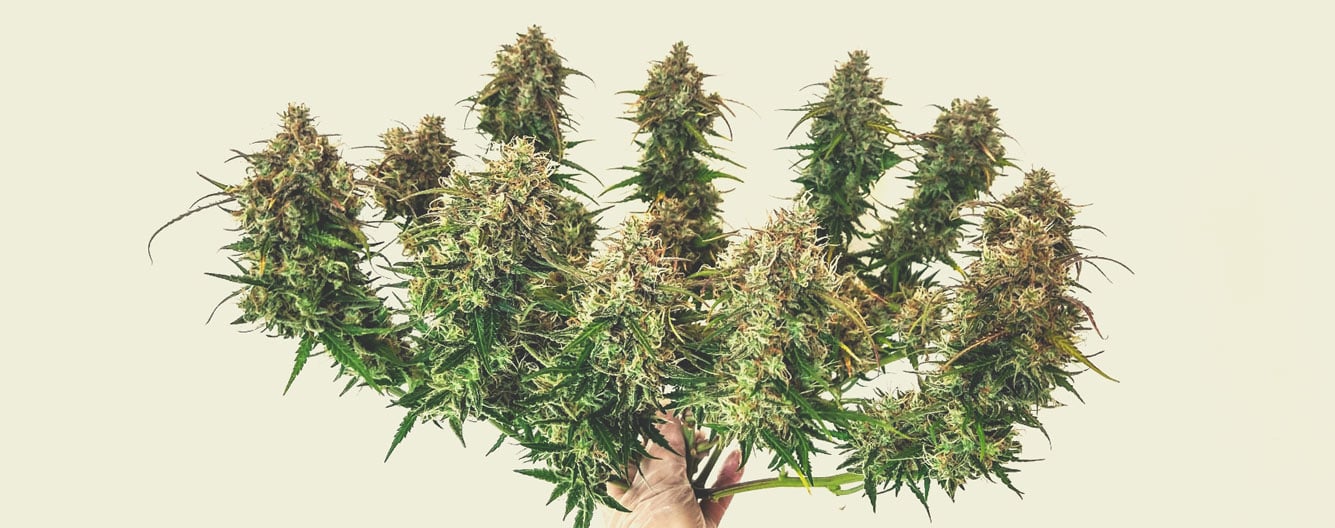
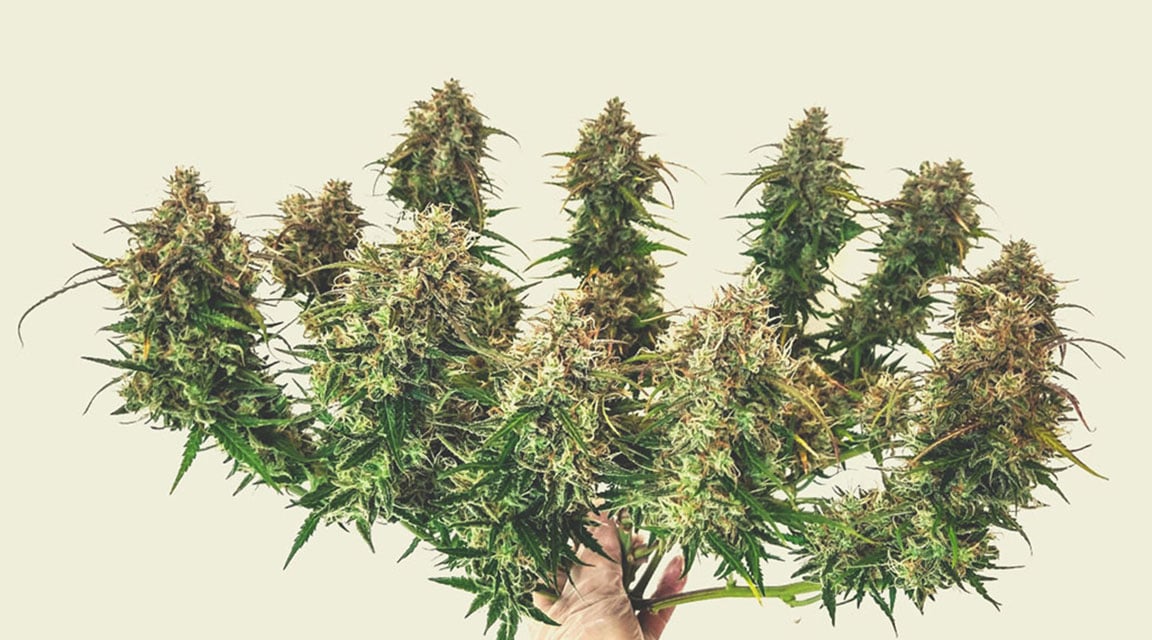
Other Important Considerations That Affect Cannabis Yield
Though we’ve discussed the main determinants of your crop’s final yield, there are many factors at play that will ultimately dictate the quality of your harvest.
-
Genetics
As mentioned, genetics plays a crucial role in the yield of your plants. Luckily, searching for specific genetics in the RQS catalogue is easy. In general, Sativa-dominant hybrids will be the most generous plants, though you may be surprised by some Indica-dominant strains that reject this expectation.
It’s also possible to just search for high-yielding cannabis seeds in general.
The four highest-yielding strains we currently stock are:
- Green Gelato — Up to 700g/m² | 800g/plant
- Amnesia Haze — Up to 650g/m² | 700g/plant
- Shogun — 600g/m² | 750g/plant
- Skunk XL — 650g/m² | 675g/plant
-
Nutrients
Plants need to be fed! If a plant doesn’t have ample nutrients, it will not be able to produce impressive buds. However, don’t get overzealous with your feeding habits. Too much fertiliser will cause nutrient lockout. This is when levels of nutrients in the soil become so high that they block the roots’ uptake of food.
Autoflowering strains tend to need fewer nutrients, so bear this in mind. You may want to start lower than instructed and see how they get on.
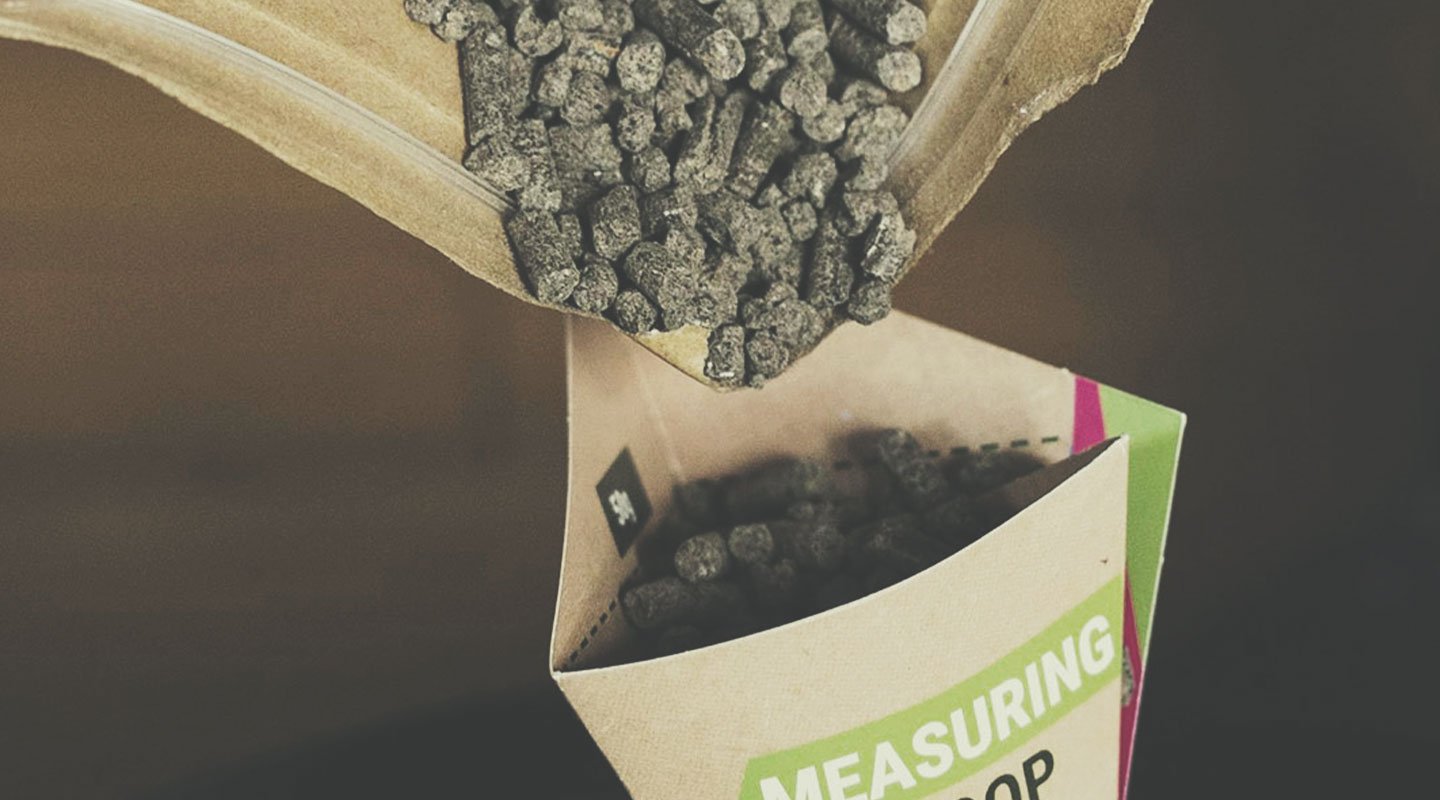
-
Light Potency
More powerful lights mean more powerful growth and bigger buds—unless they’re too powerful, in which case your plants will burn. Likewise, cloudless skies and powerful sunlight will provide better yields than the flabby English sky.
Indoors, the number of plants, and their pot size, must be commensurate with the amount of light you can provide. Outdoors, living in a southern European country or California would be helpful!
-
Weather, Temperature, and Humidity
Light levels are not the only environmental factor to consider. Plants like warmth and the right humidity.
Sativas are especially delicate, and like warm, dry environments.
If you're growing further north, opt for more robust Indica-dominant hybrids. On the same note, these strains are likely to finish earlier in the year, which is beneficial the further north you go. There’s no point growing a Sativa that yields 2kg of bud if it finishes at the end of October and you live in Sweden.
Indoors, you can control all the various factors. If you have a tent and ventilation system, you can really fine-tune it. If you just have a room, there’s still a lot of ways to maintain control, especially over temperature.
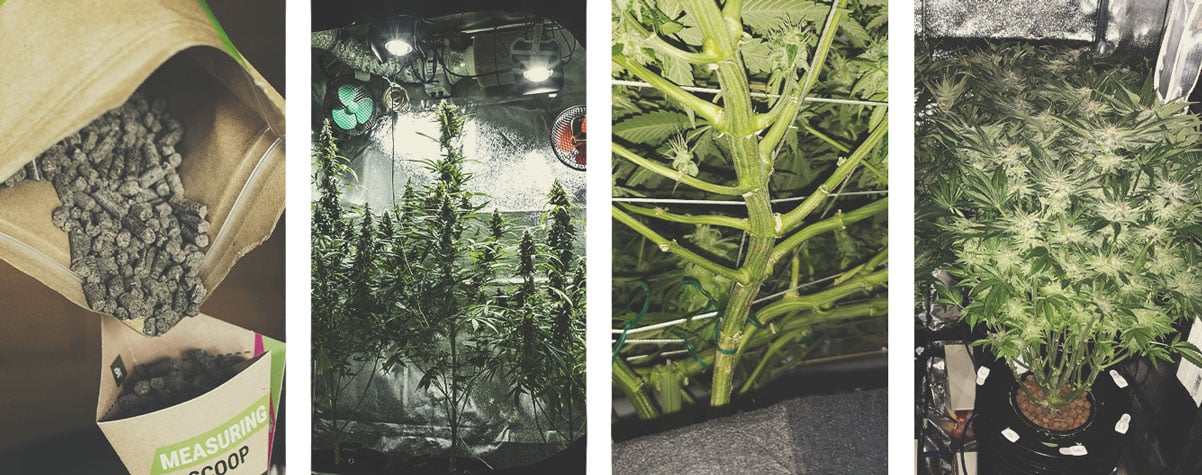
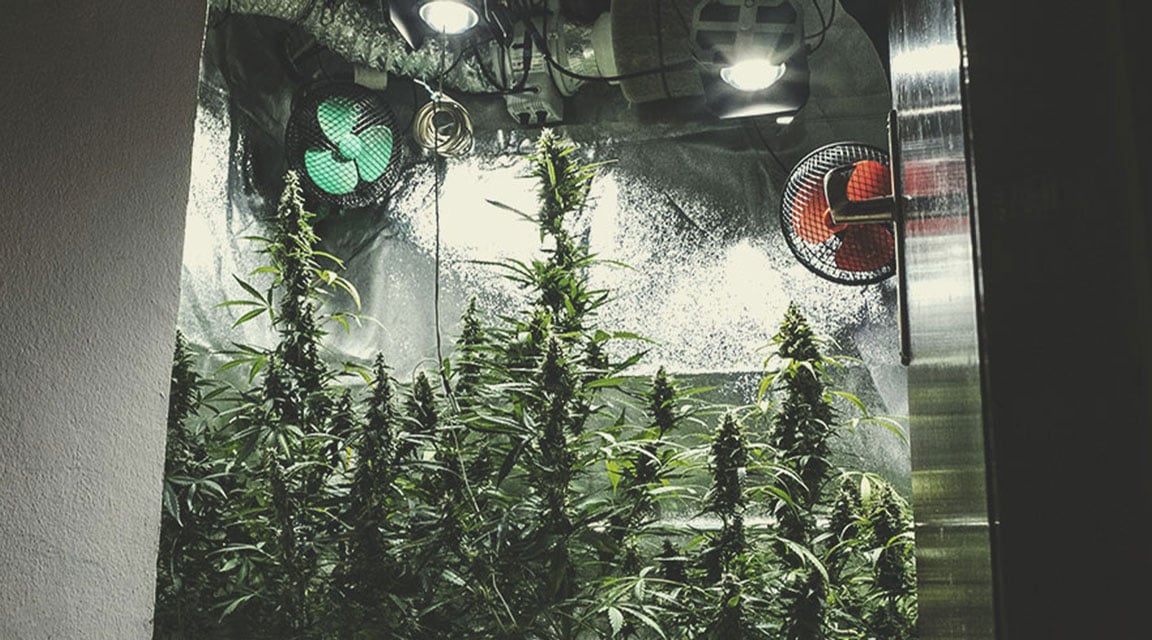
-
Time Spent Vegetating
The vegetative stage of growth determines a weed plant’s final size. Once it begins flowering, the energy goes from growing upwards and outwards to produce buds. So the longer a plant vegetates, the larger the final yield can be, in general.
With autoflowering strains, you can’t control the length of this stage, but you can make sure each day of vegging is well spent. With photoperiod plants, on the other hand, you dictate when they begin to flower indoors (when you switch to a 12/12 light cycle). Usually, they are given between 2 weeks and 2 months to veg.
Outdoors, plants will only begin flowering when they sense autumn is coming (as available light dwindles). So to get the most out of them, plant as early as possible, as they will continue to grow throughout all of spring and summer.
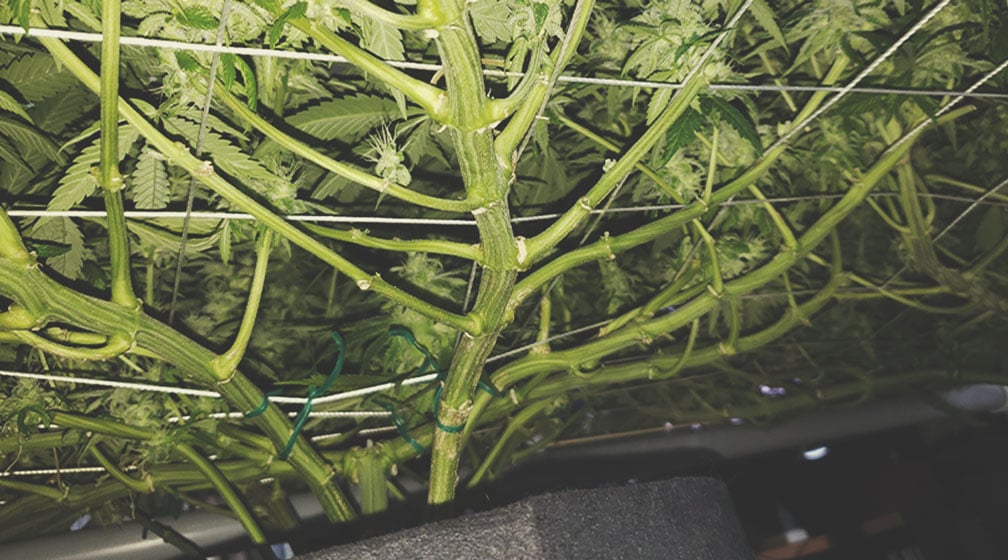
-
Training
Training techniques can vastly improve your final yield. Most of these are used indoors, although trellising and low-stress training (LST) can be utilised to increase outdoor yields too.
Indoors, SOG, ScrOG, topping, defoliation, and high-stress training are all viable options. Though each of these is different, they share the same fundamental aim: to increase light exposure at the bud sites. Your level of skill, your space available, what time do you have and what kind of plant you want will determine which, if any of these techniques, you opt for.
Note that most growers avoid topping their autoflowering plants as they will not have sufficient time to recover before entering the flowering phase.
-
Hydroponics
A hydroponic setup can increase your yield by up to 20%. This is due to more efficient nutrient uptake. Though an effective growing method, it’s a whole different challenge and requires a potentially complex setup with a bit more opportunities to go wrong.
But if you fancy it, give it a go!
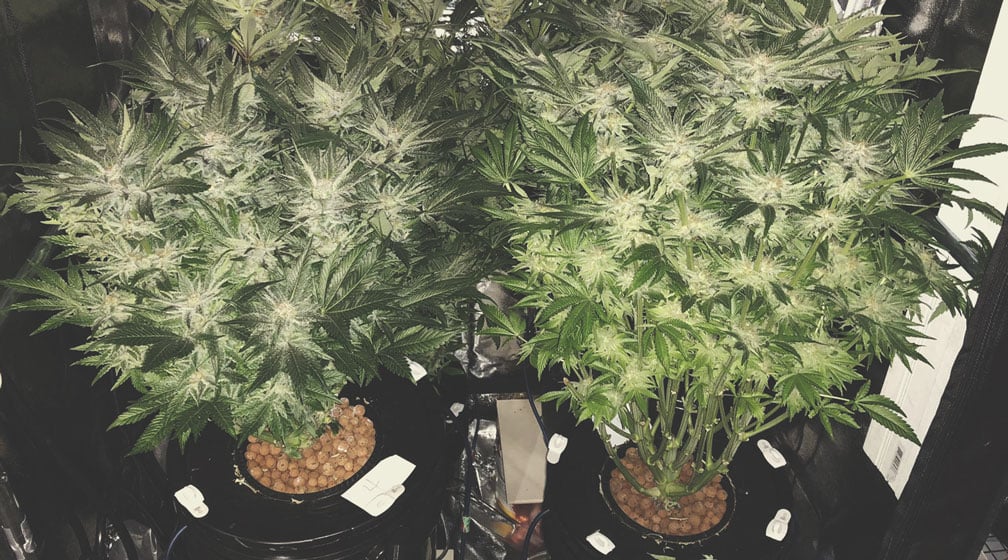
Determining Marijuana Plant Yield: The Takeaway
You’ll never be able to know exactly how much weed you'll get from one plant before you have it in front of you. But by understanding the different factors at play, you can make a much more accurate estimate about what you are likely to have.
If you’re a novice, don’t worry too much—it’s all a learning experience, and with practice comes perfection. In time, as you cement the necessary skills, there’s no doubt you can achieve the bumper harvests of your dreams!


























